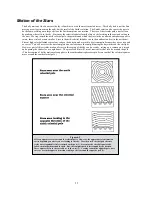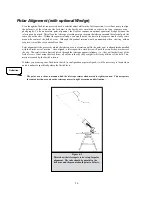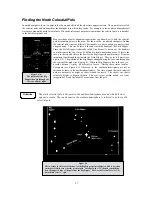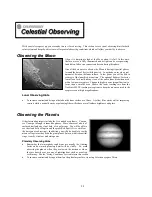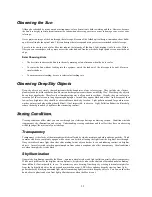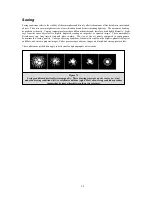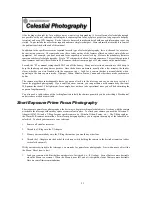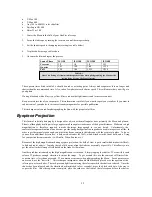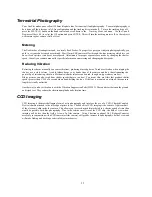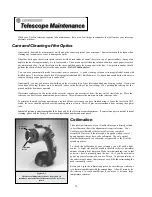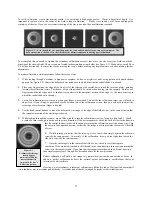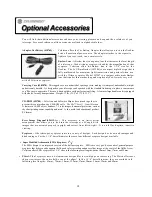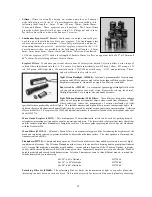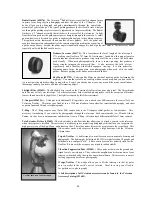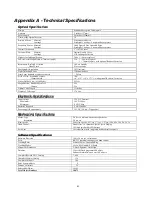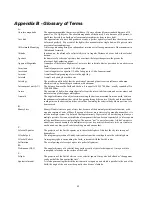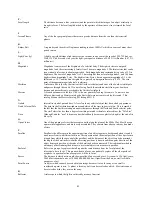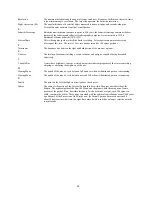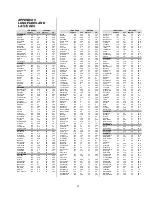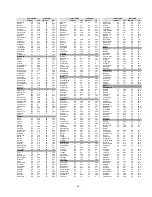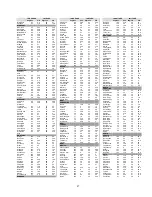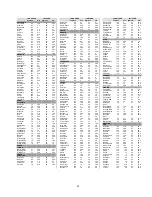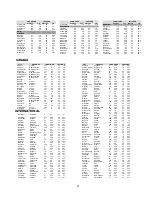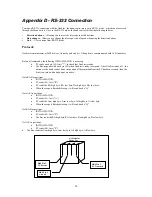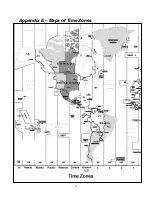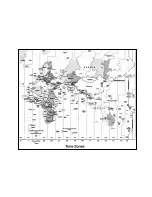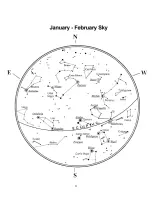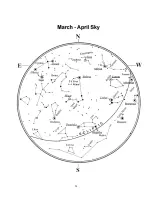
39
• Ultima -
Ultima is not really a design, but a trade name for our 5-element,
wide field eyepieces. In the 1-1/4" barrel diameter, they are available in th
following focal lengths: 5mm, 7.5mm, 12.5mm, 18mm, 24mm, 30mm,
35mm, and 42mm. These eyepieces are all parfocal. The 35mm Ultima
gives the widest possible field of view with a 1-1/4" diagonal and is idea
for the NexStar with or without the Reducer/Corrector.
• Lanthanum Eyepieces (LV Series) -
Lanthanum is a unique rare earth glas
used in one of the field lenses of this new eyepiece. The Lanthanum glass
reduces aberrations to a minimum. All are fully multicoated and have a
astounding 20mm of eye relief — perfect for eyeglass wearers! In the 1-1/4"
barrel diameter, they are available in the following focal lengths: 2.5mm,
4mm, 5mm, 6mm, 9mm, 10mm, 12mm and 15mm. Celestron also offers th
LV Zoom eyepiece (#3777) with a focal length of 8mm to 24mm. It offers an apparent field of 40 o at 24mm and
60o at 8mm. Eye relief ranges from 15mm to 19mm.
Eyepiece Filters
- To enhance your visual observations of solar system objects, Celestron offers a wide range of
colored filters that thread into the 1-1/4" oculars. Available individually are: #12 deep yellow, #21 orange, #25
red, #58 green, #80A light blue, #96 neutral density - 25%T, #96 neutral density - 13%T, and polarizing. These
and other filters are also sold in sets.
Night Vision Flashlight - (#93588) - Celestron’s premium model for astronomy,
using two red LEDs to preserve night vision better than red filters or other devices.
Brightness is adjustable. Operates on a single 9 volt battery (included).
Red Astro Lite – (#93590) – An economical squeeze-type flashlight fitted with a
red cap to help preserve your night vision. Remove the red cap for normal
flashlight operation. Very compact size and handy keychain.
Light Pollution Reduction (LPR) Filters - These filters are designed to enhance
your views of deep sky astronomical objects when viewed from urban areas. LPR
Filters selectively reduce the transmission of certain wavelengths of light,
specifically those produced by artificial lights. This includes mercury and high and low pressure sodium vapor lights. In
addition, they also block unwanted natural light (sky glow) caused by neutral oxygen emission in our atmosphere. Celestron
offers a model for 1-1/4" eyepieces (#94126A) and a model that attaches to the rear cell ahead of the star diagonal and visual
back (#94127A).
Micro Guide Eyepiece (#94171) - This multipurpose 12.5mm illuminated reticle can be used for guiding deep-sk
astrophotos, measuring position angles, angular separations, and more. The laser etched reticle provides razor sharp lines
and the variable brightness illuminator is completely cordless. The micro guide eyepiece produces 100 power when used
with the NexStar at f/10.
Moon Filters (#94119-A) - Celestron’s Moon Filters is an economical eyepiece filter for reducing the brightness of the
moon and improving contrast, so greater detail can be observed on the lunar surface. The clear aperture is 21mm and the
transmission is about 18%.
Planisphere (#93720) - A simple and inexpensive tool for all levels of observers, from naked eye viewers to users of highl
sophisticated telescopes. The Celestron Planisphere makes it easy to locate stars for observing and is a great planet finder as
well. A map of the night sky, oriented by month and day, rotates within a depiction of the 24 hours of the day, to display
exactly which stars and planets will be visible at any given time. Ingeniously simple to use, yet quite effective. Made of
durable materials and coated for added protection. Celestron Planispheres come in three different models, to match the
latitude from which you’re observing
For 20
°
to 40° of latitude
#93720-30
For 30
°
to 50
°
of latitude
#93720-40
For 40
°
to 60
°
of latitude
#93720-50
Polarizing Filter Set (#93608) -
The polarizing filter set limits the transmission of light to a specific plane, thu
increasing contrast between various objects. This is used primarily for terrestrial, lunar and planetary observing.
Summary of Contents for NexStar 5
Page 1: ...I IN NS ST TR RU UC CT TI IO ON N M MA AN NU UA AL L ...
Page 51: ...51 A Ap pp pe en nd di ix x E E M Ma ap ps s o of f T Ti im me e Z Zo on ne es s ...
Page 52: ...52 ...
Page 53: ...53 ...
Page 54: ...54 ...
Page 55: ...55 ...
Page 56: ...56 ...
Page 57: ...57 ...
Page 58: ...58 ...

